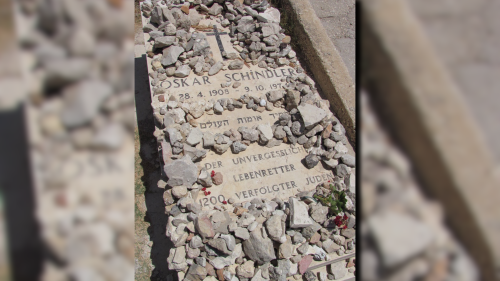While outright violence is a well-known — and very obvious — way of annihilating a people, lesser known are the subtle, slow-motion ways that can be exerted to suffocate a people into extinction.
For example, earlier this year, Cardinal Louis Raphael Sako, leader of the Chaldean church in Iraq, sounded the alarm over the near extinction of Christianity in Iraq (where it had been firmly embedded for nearly 2,000 years, since shortly after the time of Christ). While he mentioned the most obvious form of persecution — the rise of the Islamic State in Iraq and Syria (ISIS) and other “radical” elements — he also made clear that anti-Christian sentiment infused the whole of Iraq’s Muslim society and (U.S.-installed) government.
Thus he spoke of how “attacks on Christians are still continuing on their skills, their jobs, the seizure of their properties,” and told of “cases of forced conversion by ISIS or others, the Islamization of minors, failure to preserve their rights, an attempt to deliberately erase their heritage, history, religious legacy, [and] expressions of hatred in some religious discourses as well as in education books.”
The article summarizing Sako’s words, “Vanishing Faith: the Exodus of Iraq’s Christians,” concludes: “It is this steady ‘drip, drip drip’ of intolerance and marginalisation that sends the message: ‘You are no longer welcome’ to a people that have lived in the region for nearly 2,000 years.”
Ethnically Cleansing the Christians
This is not the first time the slow genocide of Christians is described as a “drip-drip” event. In 2017, noted author, journalist, and Pakistani politician Farahnaz Ispahani said,
Right before the partition of India and Pakistan, we had a very healthy balance of religions other than Islam. Hindus, Sikhs, Christians, Zoroastrians. [Now] Pakistan goes from 23 percent [non-Muslim], which is almost a quarter of its population, to three percent today. I call it a “drip drip genocide,” because it’s the most dangerous kind of wiping out of religious communities. ... It doesn’t happen in one day. It doesn’t happen over a few months. [emphasis added]
The answer is connected to another question: Why did so many non-Muslims become Muslim in the first place?
Persecution Isn’t a Bug but a Feature
Many modern-day Muslims and Western apologists claim the ancestors of today’s 1.5 billion Muslims converted to Islam due to its intrinsic appeal; that the modern-day coercion and persecution ISIS and others commit is an aberration.
Conversely, many Muslim and non-Muslim historical records make clear that most people embraced Islam, not out of sincere faith, but for myriad reasons — from a desire to enjoy the boons of being on the “winning team” to seeking to evade the dooms of being on the “losing team.”
Because well-documented facts have little influence on the modern West’s ahistorical sense of reality, happily common sense validates what history records: the Islamic world is built atop not so much the physical genocide of infidels, but the spiritual and cultural genocide of their identity.
This killing of two birds with one stone was always more advantageous for Islam: while the non-Muslim’s former religious/cultural identity is purged, his body remains to strengthen the ranks of Islam.
Egypt Was Once as Christian as Alabama
Egypt serves as an ideal paradigm. It had been Christian for centuries by the time Islam was being formulated. Alexandria was the most important ecclesiastical center of ancient Christian learning and, along with Rome and Antioch, one of the original three sees.
Writing around the year 400 — roughly two-and-a-half centuries before the Arab invasions — John Cassian, a European, observed that “the traveler from Alexandria in the north to Luxor in the south would have in his ears along the whole journey, the sounds of prayers and hymns of the monks, scattered in the desert, from the monasteries and from the caves, from monks, hermits, and anchorites.” In recent times, both the oldest parchment to contain words from the Gospel (dating to the first century) and the oldest image of Christ were discovered in separate regions of Egypt.
What made such an ancient and heavily Christian nation become Islamic? More specifically, what made the ancestors of today’s Egyptian Muslims — most of who were Coptic Christians — embrace Islam?
Before answering these questions, we must examine another overlooked factor. From the time Islam conquered Egypt (and much of the then-known Christian world), in the seventh century and well into the premodern era, religion was not something to be casually adhered to or changed, as it is today in the West. People then were sincere believers; there was no alternative narrative — no so-called “science vs. God” claims. As Thomas Madden once put it, “for medieval people, religion was not something one just did at church. It was their science, their philosophy, their politics, their identity, and their hope for salvation. It was not a personal preference but an abiding and universal truth.”
In other words, even if Islam held intrinsic appeal, the idea that pre-modern Christians were “free” to choose to convert — free of guilt, free of fear of Hell, free of existential trauma that comes with apostasy — is anachronistic and implausible. Those who change religions as often as they change shoes may have great difficulty in fully appreciating this idea, but it is true nonetheless.
Centuries of Jim Crow Apartheid and Periodic Lynchings
If Europeans were this dedicated to Christianity in the medieval era, naturally so too were the Copts of Egypt, who became Christian centuries before most Europeans. What, then, made them convert to Islam, so that a mere 10 percent to 15 percent of Egypt is still Coptic?
Is it true, to quote Georgetown University professor John Esposito, that Christians “were free to practice their faith to worship and be governed by their religious leaders and laws in such areas as marriage, divorce, and inheritance. In exchange, they were required to pay tribute, a poll tax (jizya) that entitled them to Muslim protection from outside aggression and exempted them from military service”?
And yet, despite such Muslim “magnanimity,” and though left in peace and unpressured, Egypt’s original Christians found the new creed of sword-swinging, camel-riding Arabs so intrinsically appealing that they willingly apostatized en masse from the religion of their forefathers?
Common sense suggests that nothing less than extremely severe persecution prompted the Copts and others to convert to Islam.
The historian who reads the primary sources — as opposed to the mainstream works of fiction being peddled as “history” by the likes of Karen Armstrong and others — the above exercise in common sense is superfluous. The original sources make abundantly clear that, while Egypt’s Copts acquiesced to dhimmi status — constantly paying large sums of extortion money and accepting life as second-class subjects with few rights, in exchange for remaining Christian — bouts of extreme persecution regularly flared up. And with each one, more Christians converted to Islam in order to find relief.
Crushed Until They Abandoned Christ
One telling example: in Muslim historian Taqi al-Din al-Maqrizi’s (d. 1442) authoritative history of Egypt, anecdote after anecdote is recorded of Muslims burning churches, slaughtering Christians, and enslaving their women and children. The only escape then — as it is increasingly today — was for Christians to convert to Islam.
After recording one particularly egregious bout in which countless Christians were slaughtered, enslaved, and raped, and some 30,000 churches in Egypt and Syria were destroyed — a staggering number that further indicates how Christian the Near East was before Islam — the pious Muslim historian makes clear why Christians converted: “Under these circumstances a great many Christians became Muslims.”
Thus, while many Christians were physically purged, many more were spiritually/culturally purged into becoming Muslims. According to internationally recognized definitions, both are forms of genocide. “Killing” and causing “serious bodily or mental harm” to members of any group of people are the first two of five legal definitions of genocide.
The third definition encapsulates the “slow-motion genocide” we’re discussing here: “Deliberately inflicting on the group conditions of life calculated to bring about its physical destruction in whole or in part.”
This is exactly what Islam did to its conquered non-Muslim subjects throughout the centuries. Indeed, it is no coincidence that this is known in Islamic parlance as the “Conditions of Omar.”
A System Designed to Break People
Thus if bouts of wholesale persecution were haphazard, the entrenched dhimmi system, built atop the “Conditions of Omar,” was always present to “inspire” increasingly impoverished non-Muslim dhimmis to convert.
Consider the words of Alfred Butler, a nineteenth-century historian writing before political correctness came to dominate academia. In The Arab Conquest of Egypt, Butler describes this in detail before concluding:
The wonder, therefore, is not that so many Copts yielded to the current which bore them with sweeping force over to Islam, but that so great a multitude of Christians stood firmly against the stream, nor have all the storms of thirteen centuries moved their faith from the rock of its foundation.
In short, it is no exaggeration to say that “the Islamic world” would be a fraction of its size (and perhaps might not exist at all) were it not for the fact that more non-Muslims were pressured into self-purging their largely Christian identities to evade persecution than those who were physically struck down by the sword
As Islam continues to grow in if not inundate those historically Christian lands that did manage to keep Islam out — namely, Europe — the same dynamic continues, slowly but surely, aided and abetted by the godless Left.








